Pruning, Not Too Late
Nicole, from near Madison, WI won the grow GROW FRUIT NATURALLY book giveaway. Congratulations Nicole! Contact me through my website, www.leereich.com with your mailiing address so I can get the book out to you.
——————————-
Time is running out to finish pruning my kiwi and grape vines, apple, pear, cornelian cherry, filbert, and chestnut trees, rose, gooseberry, currant, blueberry, raspberry, blackberry, yew, and fothergilla bushes . . . now that I list most of them, it doesn’t really seem like too, too much still to prune. Some people worry that it’s too late to prune. Nope. Most pruning is done during the dormant season, that is, anytime plants are not growing or, if deciduous, leafless. (A notable exception is spring-blooming shrubs, which are best pruned right AFTER they finish flowering. For more on all aspects of pruning, see my book, THE PRUNING BOOK.)
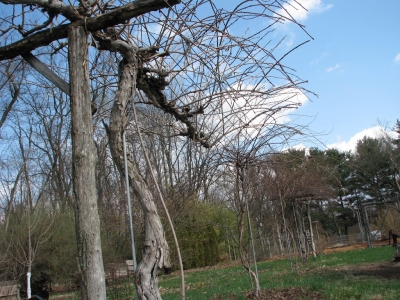 |
| Kiwi, before pruning |
I’ll usually do a little pruning in autumn, after leaves fall, but mostly I’ll be grabbing pruning shears, loppers, and saw as I go out the back door in late February or March, after the coldest part of winter is over. Waiting is most important with plants that are least cold-hardy because these plants tolerate cold better if left alone and, by waiting, I can see what has been damaged during winter. Buds on damaged stems aren’t swelling up this time of year so those stems can be cut off.
A few plants warrant dragging out that waiting period even longer, until they are in bloom, which is when they heal quickest. Peaches are prone to infections at wounds, pruning or otherwise, making these trees good candidates for waiting.
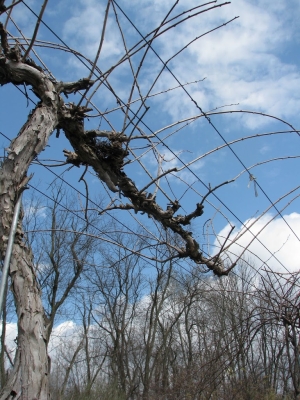 |
| Kiwi, after pruning |
———————————–
I may also wait to prune my grape vines until new shoot growth is underway because then they are less likely to bleed sap.
Bleeding sap worries many gardeners. Isn’t the plant suffering from that gaping wound oozing a watery fluid? No, bleeding does no harm to grape vines. But some of my grapevines climb along the arbor over my patio. It’s very pleasant to sit outdoors on that patio on warm, spring days; it’s very unpleasant to sit there with sap dripping on my head.
Kiwi vines also bleed. No matter. My kiwi vines climb a strictly functional trellis below which we don’t sit.
Root pressure of water being forced up the vines is what makes grape and kiwi vines bleed. Once leaves unfold, they take up that pressure and bleeding ceases.
———————————
Bleeding is most welcome from maple trees. What comes out this time of year is a dilute, sugary sap that, when boiled down to concentrate the sugars, yields maple syrup and, if boiled down still more, maple sugar. Sugar concentration in the sap can vary, depending on such factors as temperatures, age of tree, site, soil fertility, and moisture. Typically, the ratio of sap to finished syrup is 40 to 1.
It’s not root pressure that’s forcing sap out the spiles I’ve tapped into holes bored into two sugar maples. Maple sap runs best when temperatures fluctuate between 20-something degree nights and 40-something degree days. Cooling temperatures cause gas bubbles in the trees xylem cells (the inner ring of trees’ cells in which liquid is conducted upwards from the roots) to shrink and to dissolve. Something’s got to fill that newfound space, so more liquid is sucked up from the roots and into the cells. As temperatures drop further, ice forms and gases are locked within the developing ice.
Come morning, pressure builds in the cells as rising temperatures melt the ice and release the gases, forcing liquid out any holes in the bark. That liquid makes its way out the spiles, thence to buckets hanging beneath the stiles, and finally to a large pot that sits and steams on my woodstove through February and March. When the sap reaches 67% sugar, boils at 219° F., or tastes like maple syrup, it’s ready to be bottled up. For me, this has been a good year, with over 5 quarts of syrup already from only 4 taps.
Only a few trees can be tapped for their sap. Any maple can, as can black walnut and butternut. Each yields a syrup with a different flavor. Birch trees also release a sap that can be boiled down to make a tasty syrup; in this case, though, it is root pressure, as with grapes, that forces out the sap.


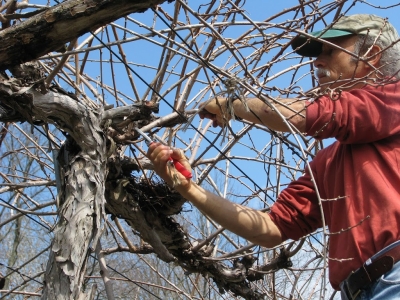
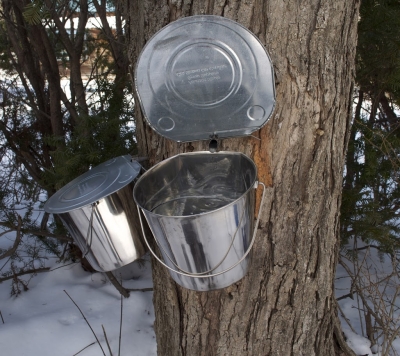
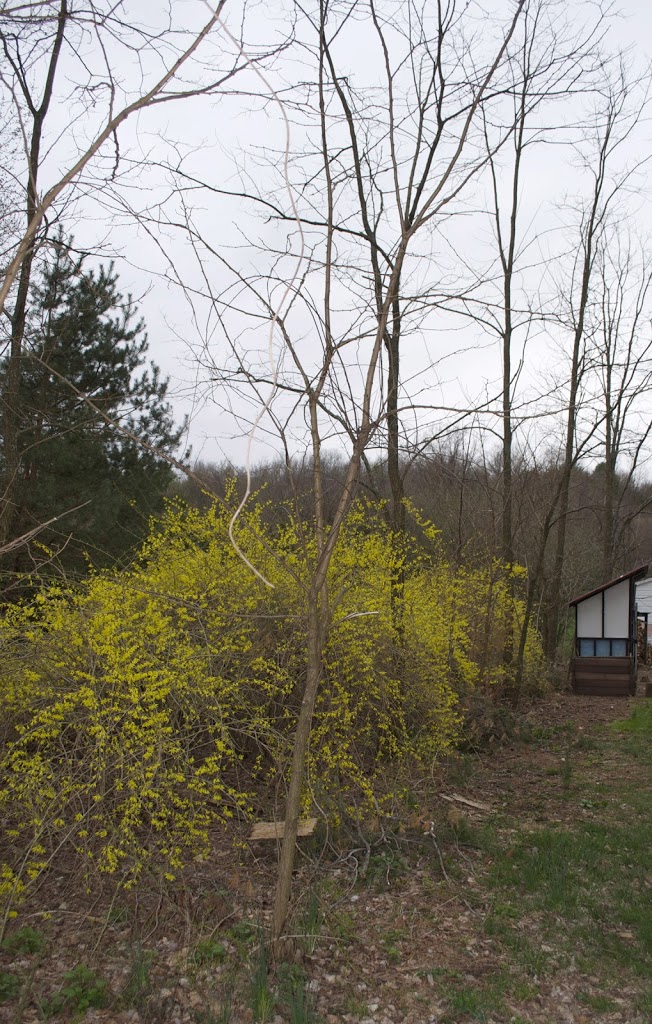
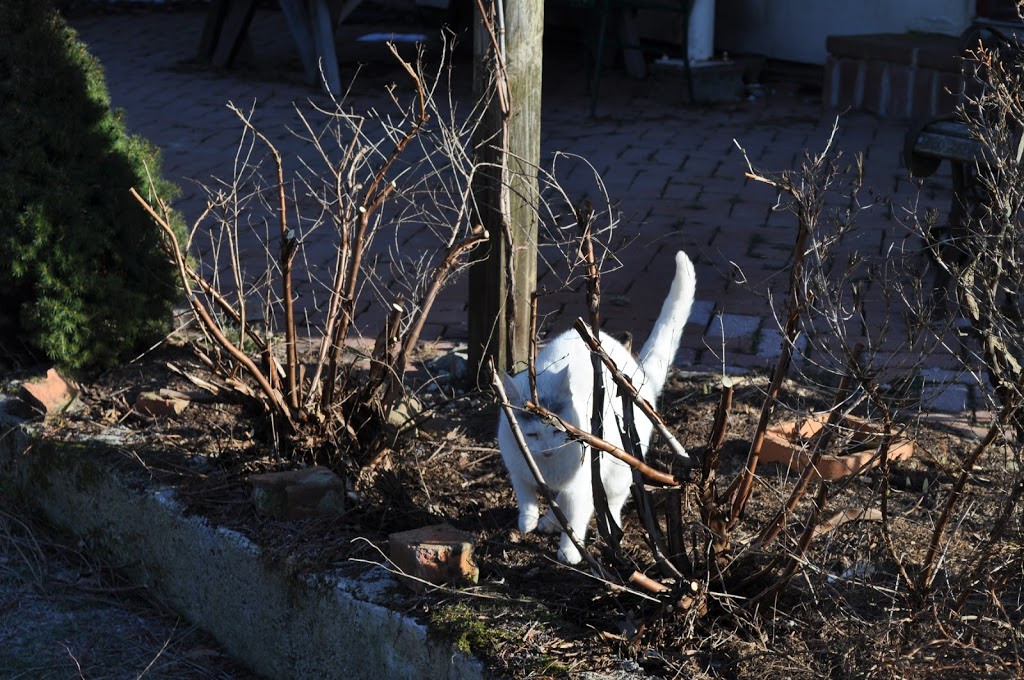
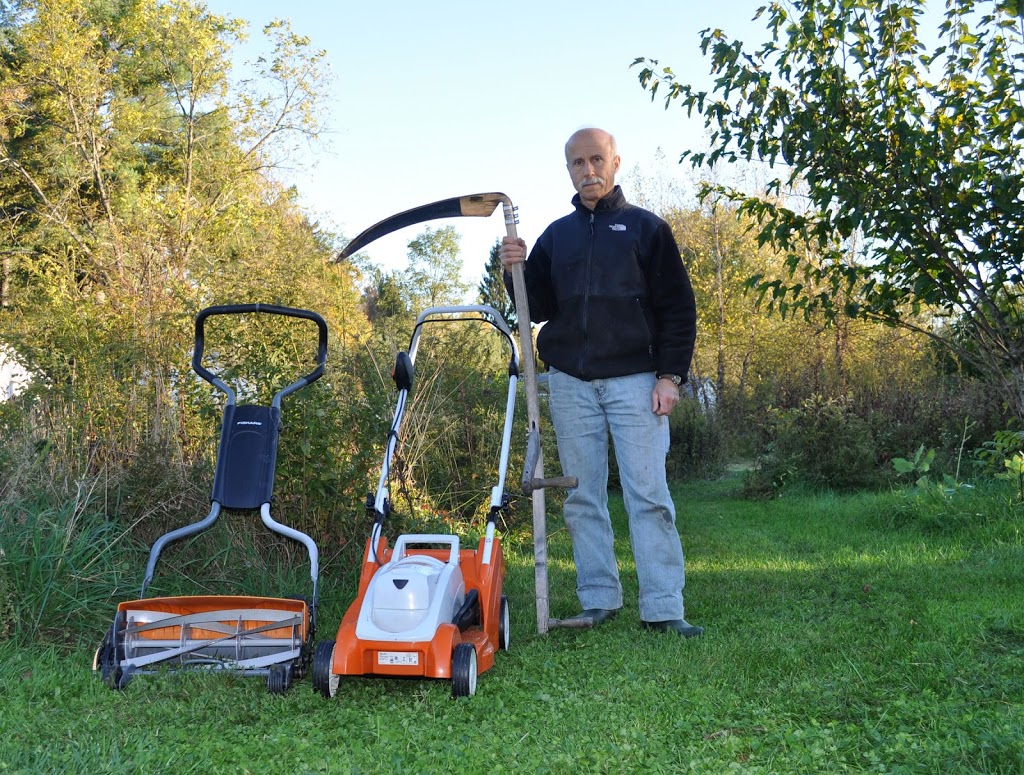

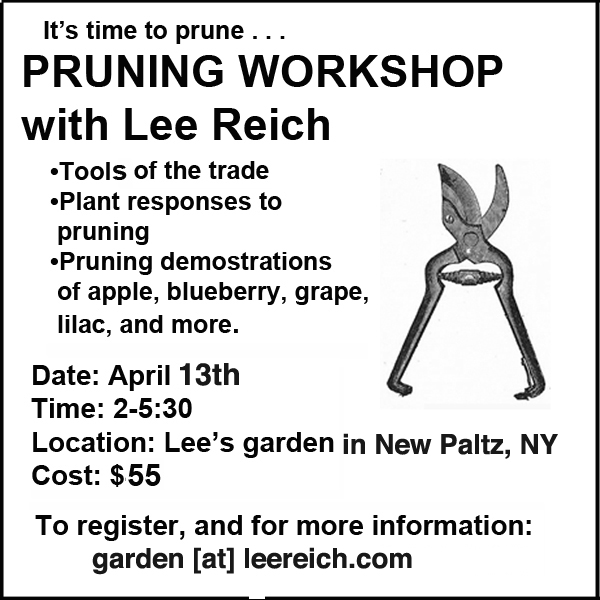
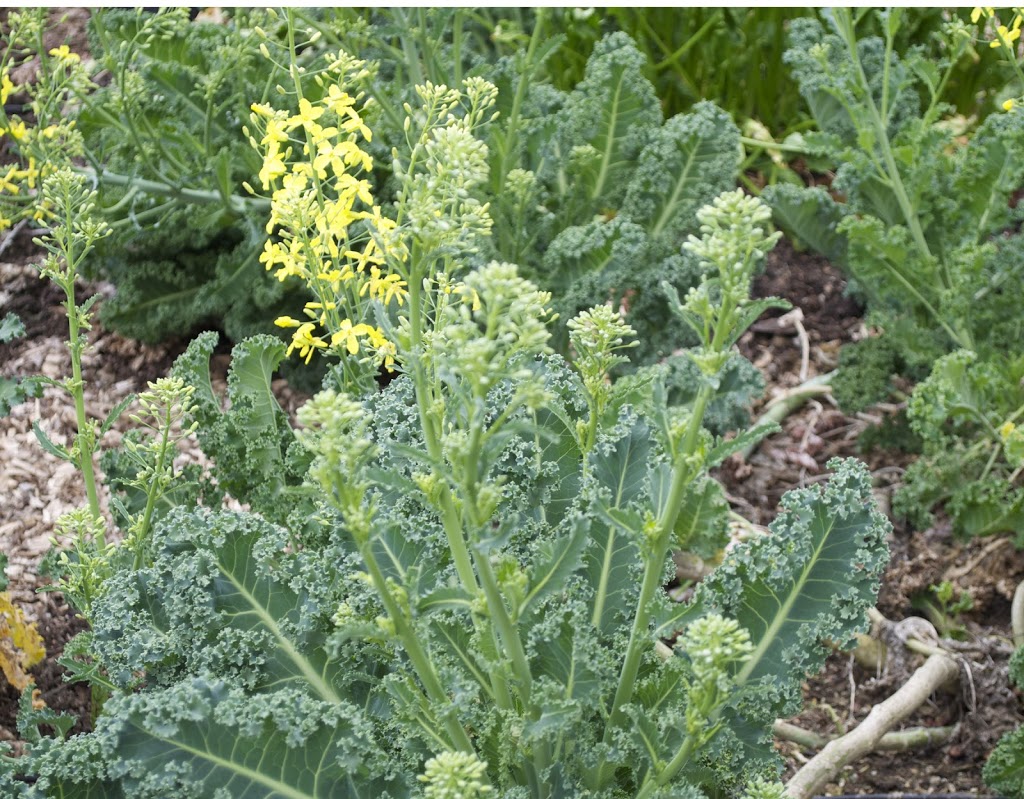
Have you tried black walnut syrup? A friend has a yard full of black walnut trees, and does not enjoy eating the nuts. (Or raking the nuts and leaves from the yard.) Perhaps if she tapped the trees and made syrup, she would feel more friendly toward them.
I love black walnuts and harvest a lot of them every year. I even have a special nut cracker that does a good job on them — the Master Nutcracker. I’ve also heard that black walnut syrup is very tasty. Still, despite everything, it seems like it would be very weird stuff. Probably because I’m thinking of juglone, the natural compound in black walnuts that is toxic to many plants. I may try the syrup some day.
Here in the rolling plains of northern Missouri maple tend to succumb to wind damage. Instead I see more forests of black walnut and hickory including what is on my farm. I am curious about the black walnut syrup and just may have to investigate that further.
I just pruned more today and the bare root raspberries arrived and I must get them in the ground soon.
Thank you for this very thorough read. I already know how to prune I just love to see accurate information being passed along. Keep up the good work
I have a cornelian cherry tree that was planted near my house. I thought it was going to be a narrow up rite tree but it is now spreading out. It is 20 plus feet tall and about 12 to 15 feet wide. How can I trim it away from my siding without damaging the tree?
You can be pretty ruthless with pruning cornelian cherry. Do so in winter.